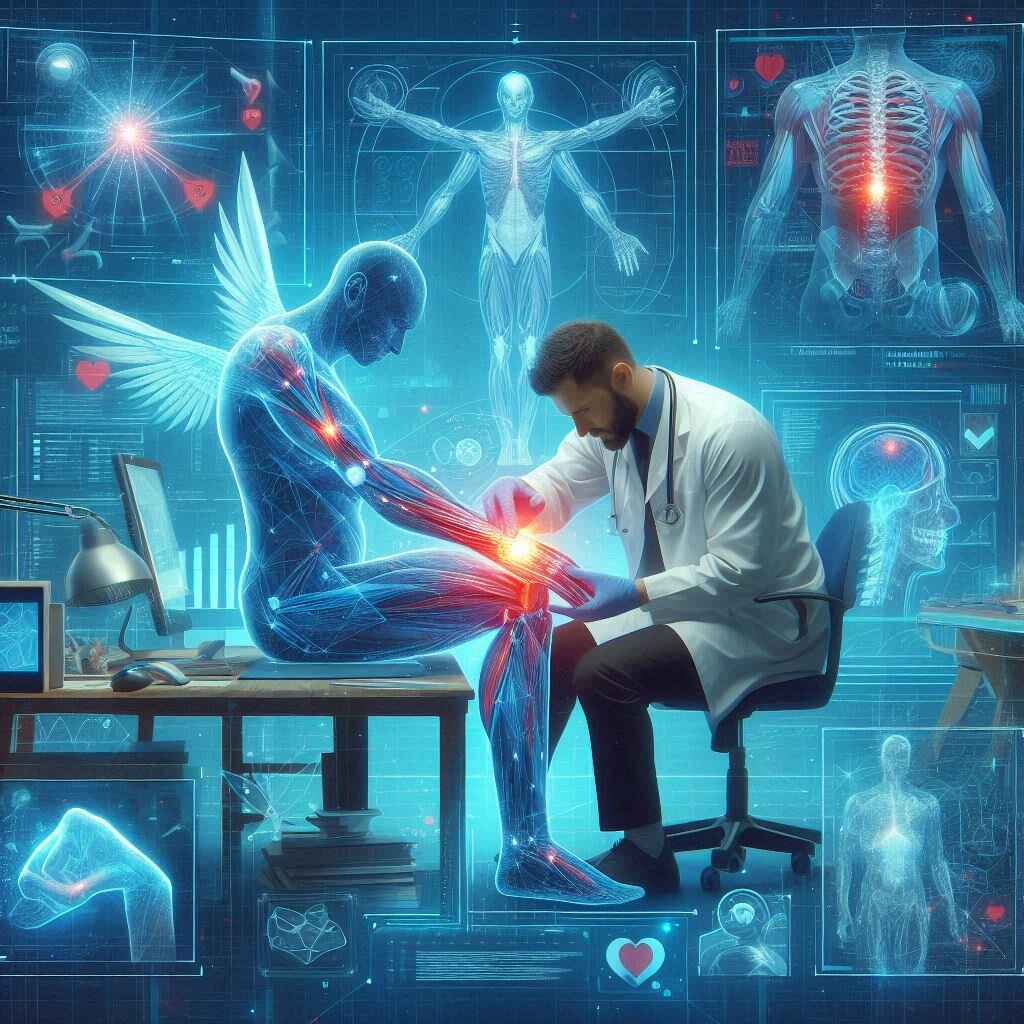Introduction
An Acromioclavicular (AC) sprain is a common shoulder injury that occurs when the ligaments connecting the collarbone to the shoulder blade are overstretched or torn. Whether caused by a fall, sports injury, or trauma, an AC sprain can lead to pain, swelling, and limited arm movement. Proper rehabilitation is essential to regain full function and prevent long-term complications.
In this guide, we will explore the essential steps for AC sprain rehab, from initial treatment to advanced exercises, ensuring a smooth and effective recovery.
Understanding AC Sprains
What Is an AC Sprain?
An AC sprain occurs when the acromioclavicular joint (AC joint) sustains damage, affecting the ligaments that hold the joint together. The severity of the injury is categorized into three grades:
- Grade 1: Mild stretching of the ligaments without joint displacement.
- Grade 2: Partial ligament tear with slight joint separation.
- Grade 3: Complete ligament rupture causing significant joint displacement.
Common Causes and Symptoms
Causes:
- Direct impact to the shoulder (e.g., sports injuries, falls, car accidents)
- Repetitive overhead motions (e.g., weightlifting, throwing sports)
Symptoms:
- Shoulder pain and tenderness
- Swelling and bruising around the AC joint
- Limited range of motion
- Visible deformity in severe cases
AC Sprain Rehabilitation Phases
Phase 1: Immediate Treatment and Pain Management
The first step in AC sprain rehab is to reduce pain and inflammation while protecting the injured joint.
Key strategies:
- Rest: Avoid activities that strain the shoulder.
- Ice therapy: Apply ice packs for 15–20 minutes every few hours.
- Compression: Use an elastic bandage or shoulder brace to stabilize the joint.
- Elevation: Keep the shoulder elevated when possible.
- Pain management: Over-the-counter anti-inflammatory medications (e.g., ibuprofen) can help.
Phase 2: Restoring Mobility and Strength
Once the initial pain subsides, the focus shifts to regaining mobility and rebuilding strength in the shoulder.
Gentle Range-of-Motion Exercises
Perform pain-free movements to maintain flexibility:
- Pendulum swings: Let your arm dangle and make gentle circular motions.
- Shoulder shrugs and rolls: Loosen up the shoulder muscles.
- Assisted arm lifts: Use your opposite hand to help raise your injured arm.
Strengthening Exercises
Gradually incorporate light resistance exercises:
- Isometric shoulder contractions: Press your hand against a wall without moving your arm.
- Theraband resistance work: Use resistance bands for light shoulder presses and lateral raises.
- Scapular stabilization exercises: Focus on strengthening the muscles around the shoulder blade.
Phase 3: Advanced Rehabilitation and Return to Activity
As strength and mobility improve, more functional exercises are introduced to prepare for daily activities and sports.
Functional Strengthening
- Push-ups (modified or full) to improve overall shoulder stability.
- Dumbbell shoulder presses for controlled strength building.
- Plank variations to enhance core and shoulder endurance.
Sport-Specific and High-Intensity Training
For athletes, integrating sport-specific drills (e.g., throwing motions, tackling techniques) helps ensure a safe return to play.
Preventing Future AC Joint Injuries
To avoid reinjury, follow these preventive strategies:
- Strengthen shoulder muscles with regular resistance training.
- Improve flexibility through dynamic warm-ups and stretching.
- Use proper technique in sports and weightlifting.
- Wear protective gear if participating in contact sports.
Conclusion
Recovering from an AC sprain requires patience, consistency, and a structured rehab plan. By following the outlined phases, you can effectively restore shoulder function, prevent complications, and return to your normal activities pain-free.
If you’re experiencing persistent pain or instability, consult a physical therapist or orthopedic specialist for a tailored rehab approach.
Stay proactive, stay strong, and take charge of your recovery!

Kallie Snyder is an author at Stonegate Health Rehab, providing valuable insights, recovery guidance, and rehab resources to help individuals achieve better health and well-being.
